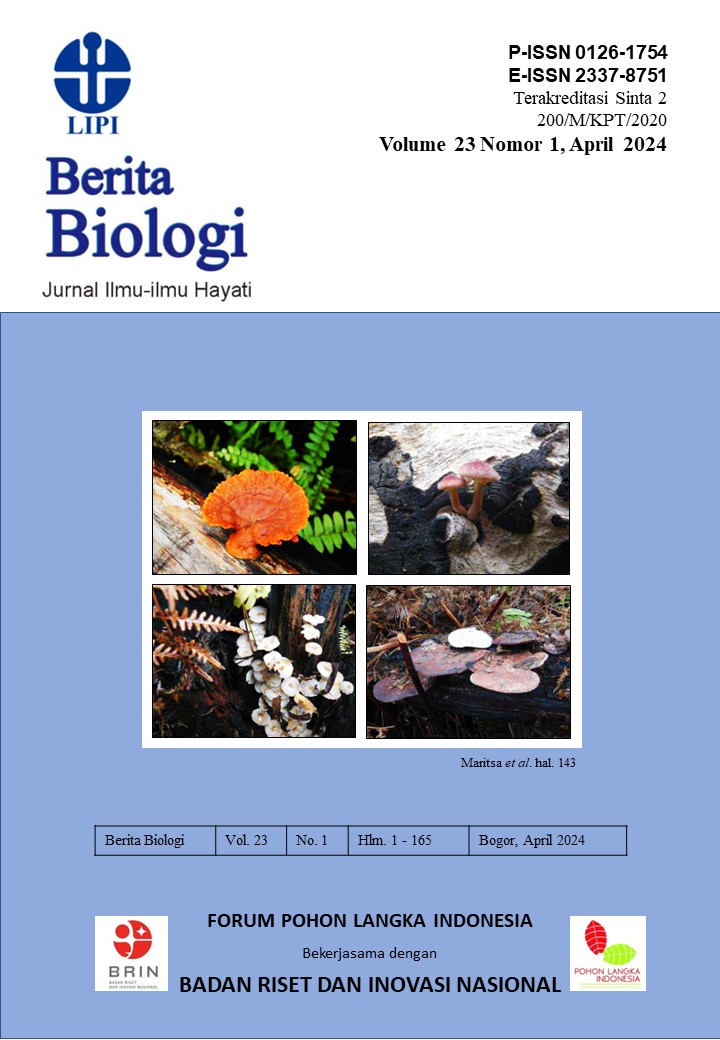ANTIOXIDANT AND ANTIBACTERIAL ACTIVITIES OF ETHYL ACETATE EXTRACT OF ACTINOMYCETES ISOLATED FROM TERMITE NESTS
DOI:
https://doi.org/10.55981/beritabiologi.2024.3618Keywords:
antioxidant, antibacterial, actinomycetes, termite nestsAbstract
Actinomycetes are an important source for the discovery of bioactive secondary metabolite compounds. Over 10,000 bioactive metabolite compounds have been isolated from terrestrial actinomycetes with various biological activities, such as antibiotic, antiviral, anti-inflammatory, antitumor, anticancer, and antioxidant. One source of origin for actinomycetes is soil, including termite nests. Utilization of natural sources such as actinomycetes from termite nests as antioxidants and antibacterials can be an alternative source of production of new secondary metabolite compounds. This research aims to evaluate the antioxidant and antibacterial activities of actinomycete extracts from termite nests. Antioxidant activity using the DPPH free radical scavenging method, and antibacterial activity against S. aureus. Antioxidant and antibacterial activity were performed by using the TLC dot-blot, TLC bioautography, and microdilution methods to determine the inhibitory concentration of 50% (IC50), antioxidant activity index (AAI), and minimum inhibitory concentration (MIC). From the 33 extracts tested, 16 extracts showed antioxidant activity with IC50 values range of 76.64-126.22 µg/mL or AAI value > 0.05 (moderate), and 8 extracts had moderate antibacterial activity against S. aureus (MIC values range of 256-512 µg/mL). Future research for scaling-up of actinomycete culture, isolating of active compounds, determining of the chemical structure of active compounds, and further testing as antioxidants and antibacterials still need to be carried out.



